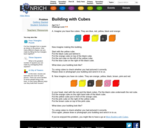
This Nrich activity challenges students to translate oral directions into actions to build a pattern with blocks.
- Subject:
- Mathematics
- Material Type:
- Activity/Lab
- Date Added:
- 06/01/2021

This Nrich activity challenges students to translate oral directions into actions to build a pattern with blocks.
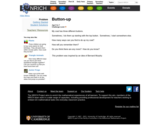
In this Nrich activity students will look for patterns and options in a common everyday situation.
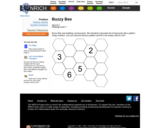
This Nrich problem gives children the chance to identify and continue number patterns, counting on and back in ones and twos. It is also a good chance for learners to understand the benefits of a trial and improvement approach.
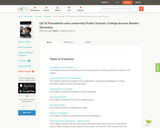
This book is a "flexed" version of CK-12's Basic Geometry that aligns with College Access Geometry and contains embedded literacy supports. It covers the essentials of geometry for the high school student.
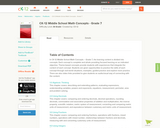
CK-12 Middle School Math Concepts for seventh grade provides a complete textbook. It presents topics including algebraic thinking, patterns, decimals, decimal operations, fractions, fraction operations, integers, integer operations, ratios, rates, proportions, percents, percent applications, equations, solving equations, inequalities, functions, graphing functions, geometry, plane geometry, solid geometry, area, perimeter, surface area, volume, statistics including mean, median, mode and range, graphing and types of graphs, and probability.
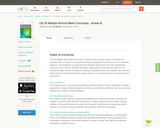
In CK-12 Middle School Math Concepts – Grade 8, the learning content is divided into concepts. Each concept is complete and whole providing focused learning on an indicated objective. Theme-based concepts provide students with experiences that integrate the content of each concept. Students are given opportunities to practice the skills of each concept through real-world situations, examples, guided practice and explore more practice. There are also video links provided to give students an audio/visual way of connecting with the content.
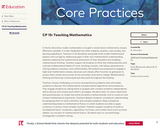
In the EL Education model, mathematics is taught in stand-alone mathematics classes. Whenever possible, it is also integrated into other subjects, projects, case studies, and learning expeditions. Teachers in all disciplines and grade levels model mathematical passion and courage by addressing gaps in their own mathematical understanding, explicitly exploring the mathematical dimensions of their discipline and modeling mathematical thinking. Teachers support all students to think like mathematicians and cultivate mathematical habits of mind, including curiosity, risk-taking, perseverance, valuing evidence, precision, and craftsmanship. All students are prepared to engage in high-level mathematics classes, because such classes often function as gateways to access other classes and courses at the secondary level and in college. Mathematical thinking and learning is showcased and discussed throughout the building.
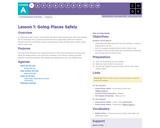
In collaboration with Common Sense Media, this lesson helps students learn that many websites ask for information that is private and discusses how to responsibly handle such requests. Students also find out that they can go to exciting places online, but they need to follow certain rules to remain safe.
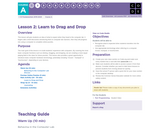
This lesson will give students an idea of what to expect when they head to the computer lab. It begins with a brief discussion introducing them to computer lab manners, then they will progress into using a computer to complete online puzzles.
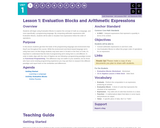
Students will begin using Evaluation Blocks to explore the concept of math as a language, and more specifically, a programming language. By composing arithmetic expressions with Evaluation Blocks, students will be able to visualize how expressions follow the order of operations.

Using the Design Recipe, students will work through a series of word problems about calculating the height of a rocket after a given number of seconds from launch. The functions they write will be used to animate the rocket launch.
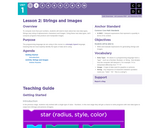
To compute more than just numbers, students will need to learn about two new data types, Strings (any string of alphanumeric characters) and Images. Using these new data types, we'll compose programs that produce and manipulate images.
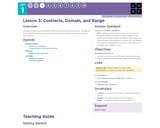
Contracts provide a way for students to better understand and discuss functions. Through this lesson, students will look at known functions and come up with the contracts that describe those functions.
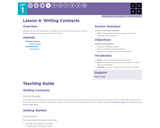
Students will work their way through a number of new functions, first using each to solve a problem, and then writing a contract which describes it.
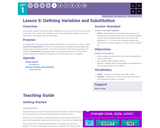
In this activity, students will learn to define variables that can be used to reference values and expressions. Once defined, their variables can be used repeatedly throughout a program as substitutes for the original values or expressions.

In the past lessons students have defined Variables and written Fast Functions. In this stage, they will continue to explore function writing with ever increasing complexity.
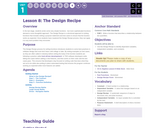
In the last stage, students wrote some very simple functions - but more sophisticated functions demand a more thoughtful approach. The Design Recipe is a structured approach to writing functions that includes writing a purpose statement and test cases to ensure that the function works as expected. Once students have mastered the Design Recipe process, they can apply it to any word problem they encounter.
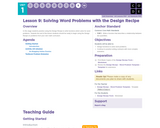
In this stage students practice using the Design Recipe to write functions which solve for word problems. Towards the end of the lesson students should be ready to begin using the Design Recipe on problems from your own math curriculum.

Determining when objects on the screen touch is an important aspect of most games. In this lesson we'll look at how the Pythagorean Theorem and the Distance Formula can be used to measure the distance between two points on the plane, and then decide whether those two points (or game characters) are touching.

Students discuss the components of their favorite video games and discover that they can be reduced to a series of coordinates. They then explore coordinates in Cartesian space, identifying the coordinates for the characters in a game at various points in time. Once they are comfortable with coordinates, they brainstorm their own games and create sample coordinate lists for different points in time in their own game.